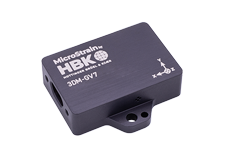- By
- Posted Friday, July 24, 2015 - 10:00
Development of a helicopter on-rotor HUM system powered by vibration energy harvesting
ABSTRACT
Helicopter transmission health and usage monitoring is mature and operating on many helicopters worldwide. Attention is now being given to improving the monitoring of rotor systems, in order to 1) further enhance safety by the early detection of incipient failures, and 2) reduce the maintenance burden by minimising or ultimately replacing high-frequency on-aircraft rotor component inspections. To realise these aims, rotor monitoring needs to go beyond the traditional track and balance management based on airframe vibration measurement and one approach is more localised sensing on rotor components. AgustaWestland is currently evaluating self-powered wireless sensing technology in a two-phase research effort under its Rotorcraft Technology Validation Programme. Firstly, AgustaWestland has conducted trials on an AW139 helicopter of a single wireless sensor node developed by LORD-MicroStrain Sensing Systems, which was located on the main rotor rotating swashplate – this has proven the key technology enablers of vibration energy harvesting and low-power/low-range radio-frequency data transmission from the rotor to the airframe. The second phase will be the development of a multi-node main rotor monitoring system with sensors mounted on selected rotor controls components, with embedded data processing in the nodes to characterise backlash in non-rotating bearings, and to reduce the volume of data transmission. The programme to take the technology forward to service implementations will focus on continuing development of wear feature detection and condition indicators, design studies for integration of the sensor nodes within the rotor system, and validation/verification.










